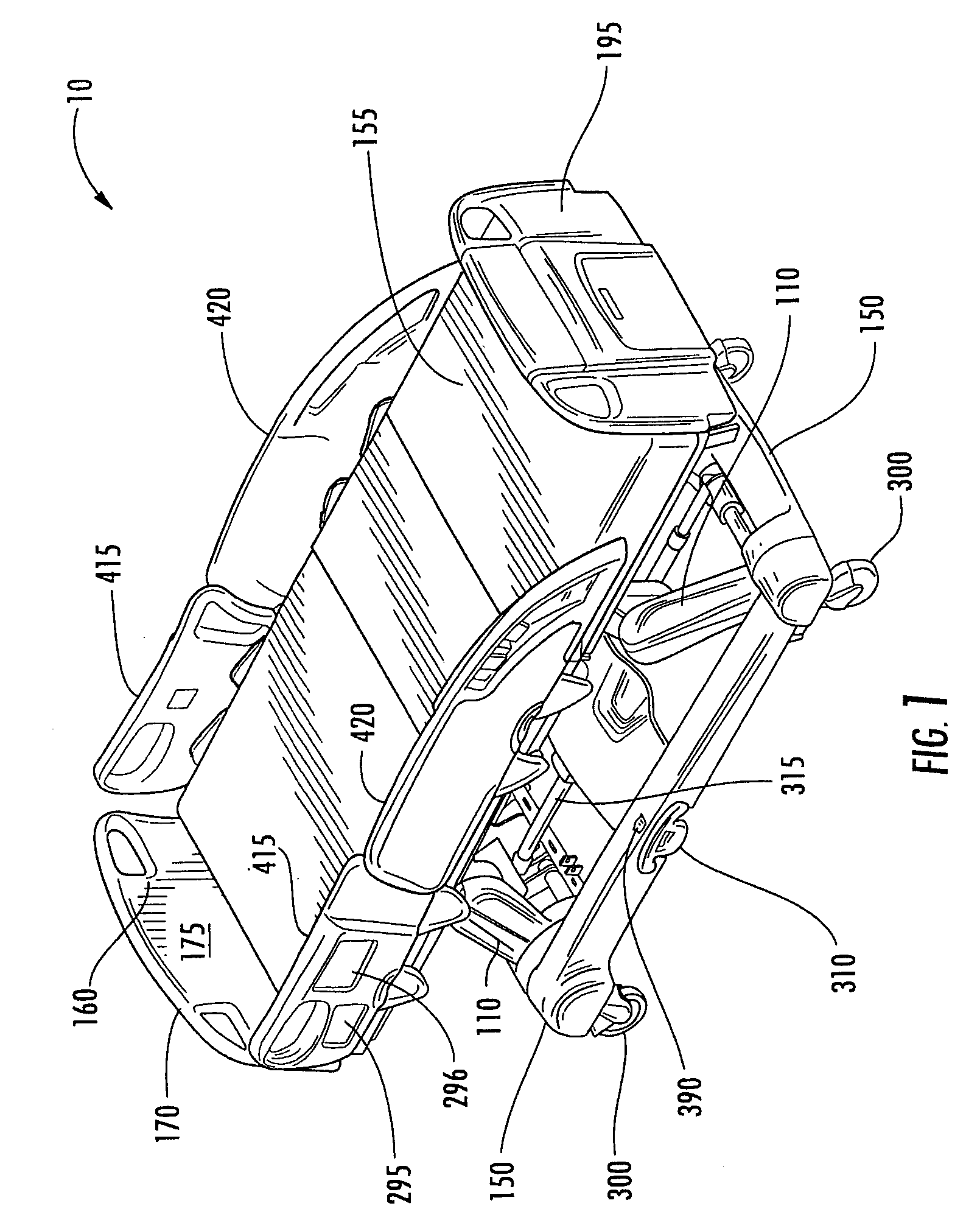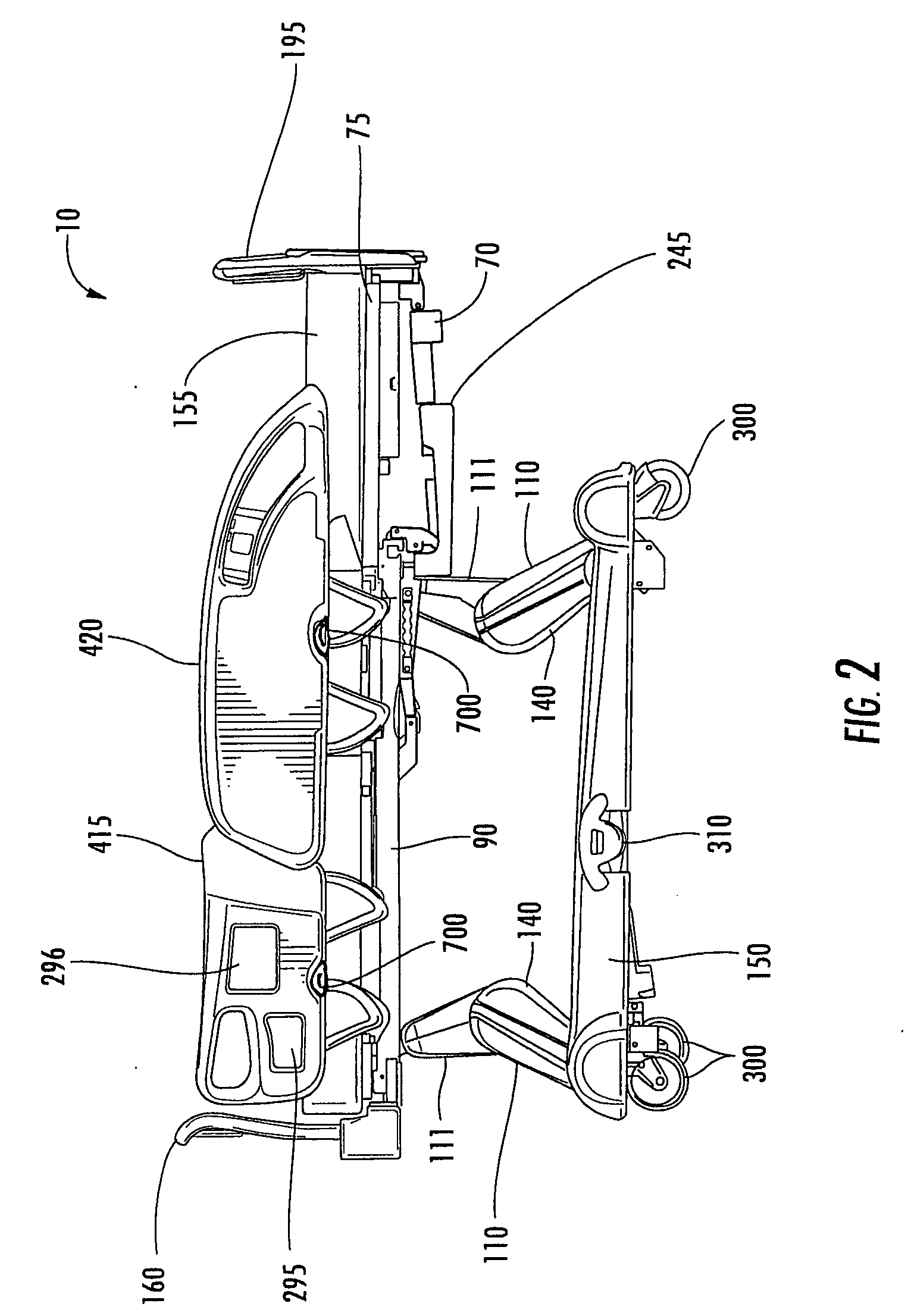Hospital bed
a technology for supporting equipment and beds, which is applied in the direction of beds, tables, transportation and packaging, etc., can solve the problems of inability to move the bed, the weight of present day beds and patients is relatively large, and the manual or motor-driven mechanism used to raise and lower the fowler section moves too slowly to be acceptable in an emergency situation, etc., to achieve the effect of raising the upper arm portion and the lower arm portion
- Summary
- Abstract
- Description
- Claims
- Application Information
AI Technical Summary
Benefits of technology
Problems solved by technology
Method used
Image
Examples
Embodiment Construction
[0089] The patient support apparatus of the present invention comprises structural elements, power and control systems; structural informatics systems; user-bed communication interfaces; and bed-network communications systems. Unless defined otherwise, all technical and scientific terms used herein have the same meaning as commonly understood by one of ordinary skill in the art to which this invention belongs.
Structural Elements
[0090] A patient support apparatus 10 according to the present disclosure is shown in FIG. 1. Patient support apparatus 10 includes a mattress or lying surface 155 upon which the patient is positioned, a frame system that supports the lying surface or other mattress 155, a pair of head-end side rails 415, a pair of foot-end side rails 420, a headboard 160, and a footboard 195. The frame system includes a deck support 20 supported by an intermediate frame 90, which is supported by an elevation system comprising lift arms 110, 111 configured to raise and low...
PUM
 Login to View More
Login to View More Abstract
Description
Claims
Application Information
 Login to View More
Login to View More - R&D
- Intellectual Property
- Life Sciences
- Materials
- Tech Scout
- Unparalleled Data Quality
- Higher Quality Content
- 60% Fewer Hallucinations
Browse by: Latest US Patents, China's latest patents, Technical Efficacy Thesaurus, Application Domain, Technology Topic, Popular Technical Reports.
© 2025 PatSnap. All rights reserved.Legal|Privacy policy|Modern Slavery Act Transparency Statement|Sitemap|About US| Contact US: help@patsnap.com



